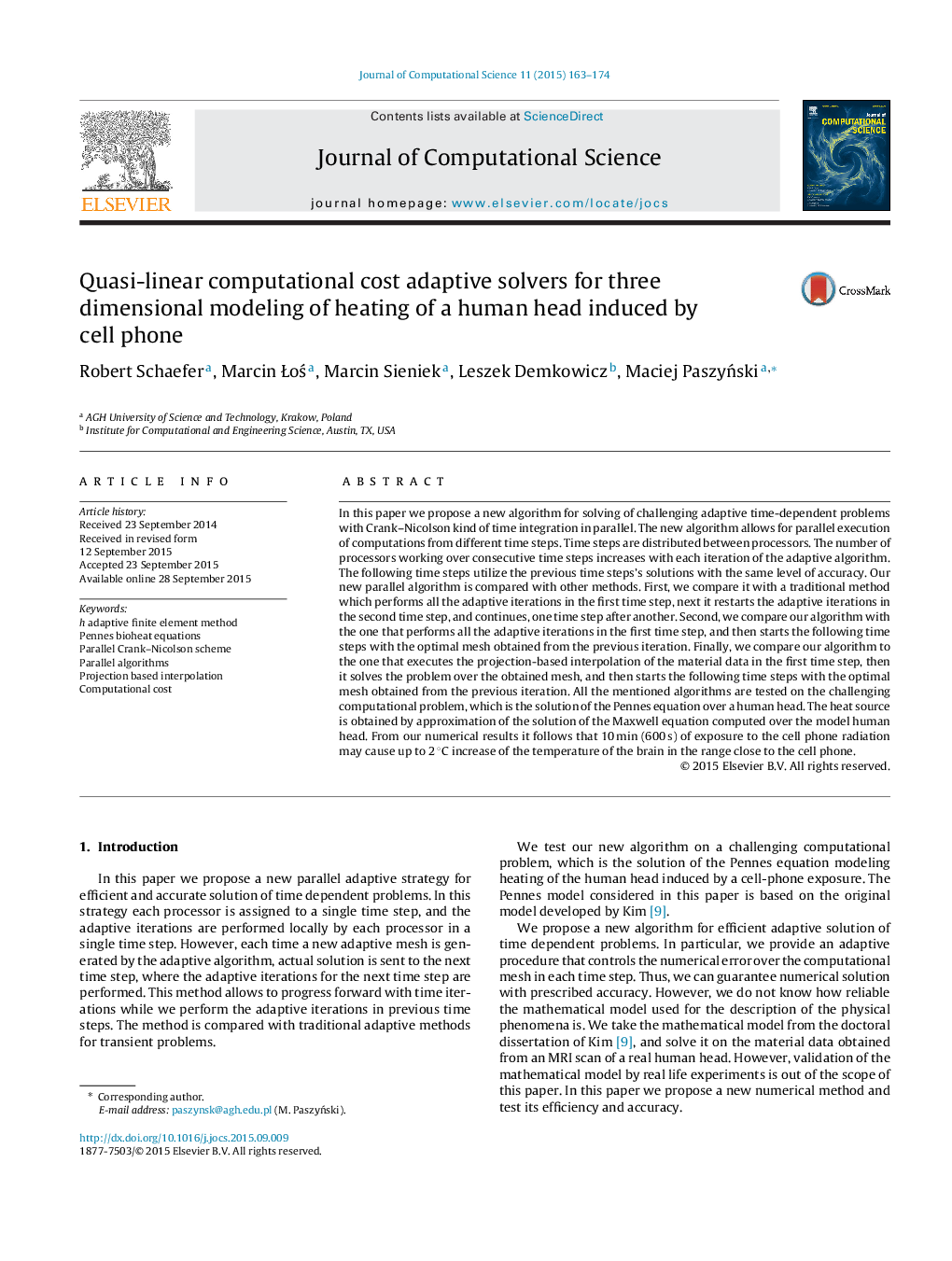| Article ID | Journal | Published Year | Pages | File Type |
|---|---|---|---|---|
| 6874570 | Journal of Computational Science | 2015 | 12 Pages |
Abstract
In this paper we propose a new algorithm for solving of challenging adaptive time-dependent problems with Crank-Nicolson kind of time integration in parallel. The new algorithm allows for parallel execution of computations from different time steps. Time steps are distributed between processors. The number of processors working over consecutive time steps increases with each iteration of the adaptive algorithm. The following time steps utilize the previous time steps's solutions with the same level of accuracy. Our new parallel algorithm is compared with other methods. First, we compare it with a traditional method which performs all the adaptive iterations in the first time step, next it restarts the adaptive iterations in the second time step, and continues, one time step after another. Second, we compare our algorithm with the one that performs all the adaptive iterations in the first time step, and then starts the following time steps with the optimal mesh obtained from the previous iteration. Finally, we compare our algorithm to the one that executes the projection-based interpolation of the material data in the first time step, then it solves the problem over the obtained mesh, and then starts the following time steps with the optimal mesh obtained from the previous iteration. All the mentioned algorithms are tested on the challenging computational problem, which is the solution of the Pennes equation over a human head. The heat source is obtained by approximation of the solution of the Maxwell equation computed over the model human head. From our numerical results it follows that 10 min (600 s) of exposure to the cell phone radiation may cause up to 2 °C increase of the temperature of the brain in the range close to the cell phone.
Related Topics
Physical Sciences and Engineering
Computer Science
Computational Theory and Mathematics
Authors
Robert Schaefer, Marcin ÅoÅ, Marcin Sieniek, Leszek Demkowicz, Maciej PaszyÅski,
